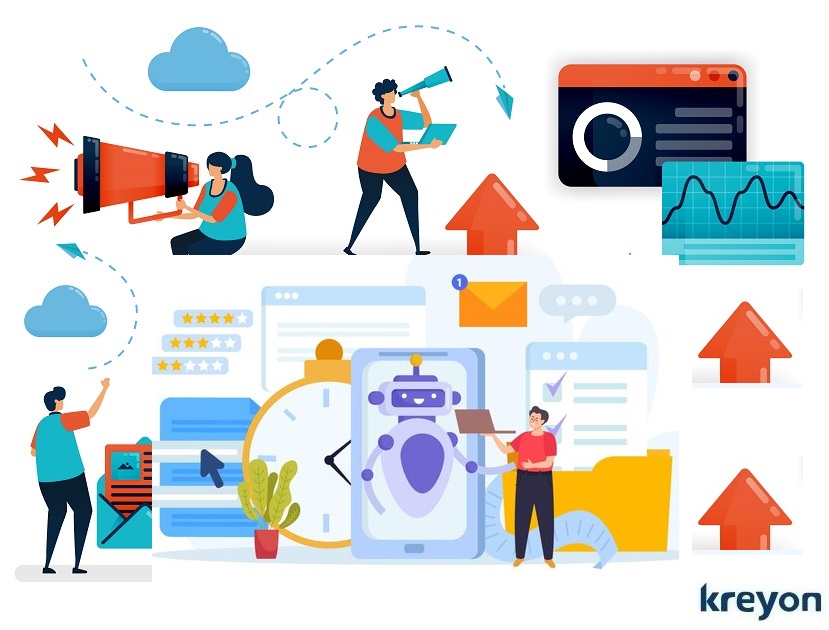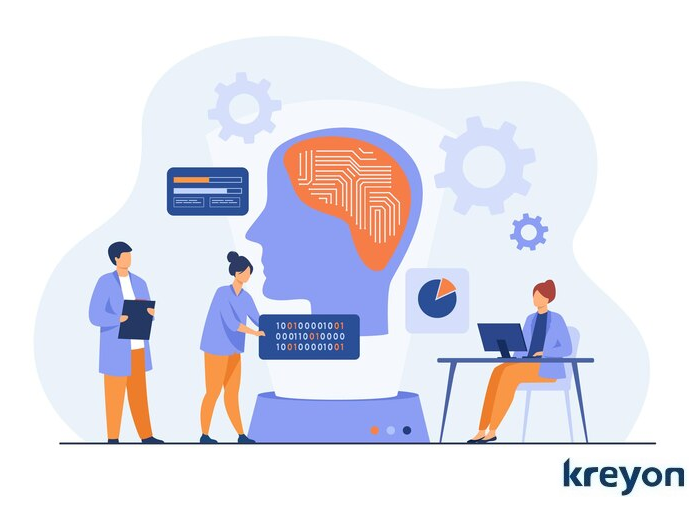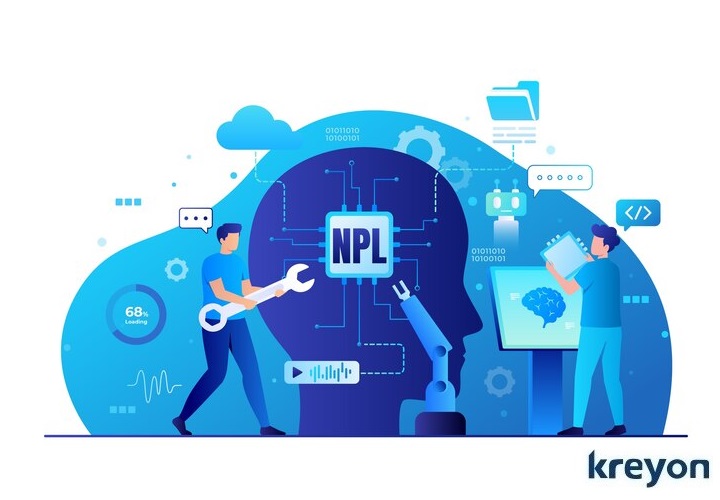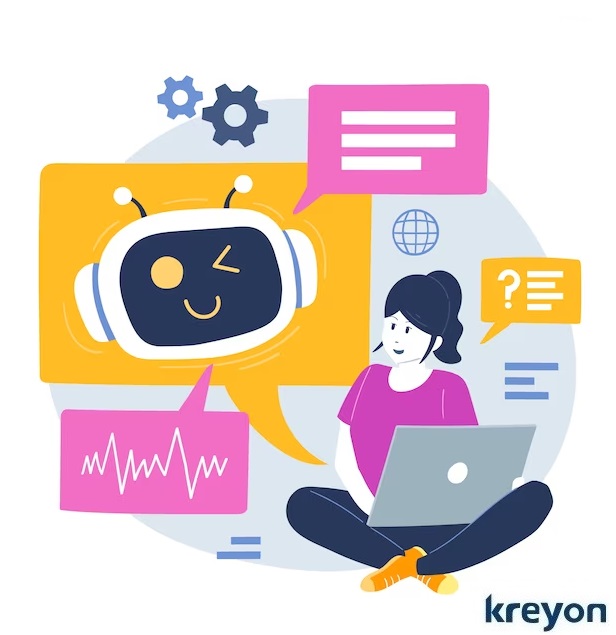The Future of SaaS: Emerging Trends and Innovations to Watch

In the ever-evolving landscape of technology, Software as a Service (SaaS) has emerged as a transformative force, reshaping the way businesses operate and individuals interact with software applications.
As we step into the generative AI era, several trends and innovations are poised to redefine the SaaS industry, paving the way for more efficiency, flexibility, and user-centric experiences.
The SaaS landscape is witnessing remarkable shifts, backed by statistics that underscore the industry’s evolution and the innovative trajectory it is on.
1. Artificial Intelligence and Machine Learning Integration
According to a report by Gartner, by 2025, more than 50% of new SaaS applications will be infused with AI capabilities.
One of the most significant trends shaping the future of SaaS is the integration of Artificial Intelligence (AI) and Machine Learning (ML).
SaaS platforms are increasingly leveraging these technologies to provide intelligent insights, automate repetitive tasks, and enhance overall user experiences. From predictive analytics to personalized recommendations, AI and ML are driving a new era of smart, data-driven SaaS solutions.
2. Multi-Cloud Environments
A Flexera report reveals that 93% of enterprises have a multi-cloud strategy, indicating a significant shift towards diversifying cloud service providers depending on niche use cases.
As businesses seek greater flexibility and scalability, the adoption of multi-cloud environments is on the rise. Rather than relying on a single cloud provider, organizations are leveraging multiple cloud services to distribute workloads strategically.
This trend allows for better risk management, improved performance, and increased resilience in the face of potential disruptions.
3. Enhanced Security Measures

A survey by Statista found that 41% of respondents are more concerned about data security and privacy than they were a year ago, indicating a growing awareness of the importance of cybersecurity. As the volume and sensitivity of data handled by SaaS applications grow, security becomes paramount.
The future of SaaS will witness a heightened focus on robust security measures, including advanced encryption, multi-factor authentication, and proactive threat detection. Additionally, privacy and compliance will be integral considerations as SaaS providers navigate evolving regulatory landscapes.
4. Low-Code/No-Code Development Platforms
Empowering non-technical users to create and customize applications, low-code and no-code development platforms are gaining momentum within the SaaS space.
These platforms enable rapid application development with minimal coding requirements, allowing businesses to innovate more swiftly and efficiently. As a result, organizations can respond to changing needs without heavy reliance on traditional development resources.
5. Collaborative and Integrated Ecosystems
The State of API Integration report by Cloud Elements indicates that 83% of organizations consider integration capabilities a significant factor when choosing a SaaS provider.
The future of SaaS lies in collaborative ecosystems that seamlessly integrate various applications and tools. SaaS providers are increasingly focusing on interoperability, allowing users to connect different software solutions effortlessly.
This trend promotes a more cohesive digital experience, where data flows seamlessly between applications, enhancing productivity and streamlining workflows.
Companies that can seamlessly integrate data across different apps, departments, and break silos to attain organisational efficiency will gain leadership in the AI era.
6. Edge Computing Integration

Edge computing integrates data processing and storage capabilities closer to the data source, enabling real-time decision-making and faster responses, for e.g. autonomous vehicles data, smart metering & smart retail etc.
As the demand for real-time processing and reduced latency grows, SaaS providers are exploring the integration of edge computing. Edge computing analyzes data in real-time, providing insights and actions to be taken by the system.
By decentralizing computing resources and processing data closer to the source, edge computing enhances the performance of SaaS applications, especially in scenarios where immediate response times are critical.
7. Subscription Model Evolution
A survey by Blissfully found that 71% of companies use a subscription model for at least one of their software tools.
While the subscription-based model has been a hallmark of SaaS, the future may witness further evolution in pricing and subscription structures.
SaaS providers are exploring innovative pricing models, such as consumption-based billing or outcome-based pricing, allowing businesses to align costs more closely with actual usage and value derived from the software.
8. Focus on User Experience and Design
The “Design Value Index” by the Design Management Institute shows that design-led companies outperformed the S&P Index by 219% over ten years. A study by Adobe found that 38% of people will stop engaging with a website if the content or layout is unattractive.
User experience (UX) and design will play an increasingly pivotal role in the success of SaaS applications. Intuitive interfaces, personalized dashboards, and seamless onboarding experiences are becoming standard expectations.
SaaS providers are investing in design thinking to ensure their platforms are not only functional but also enjoyable and user-friendly.
9. Sustainability and Green Computing

The Green Software Foundation reports that if the global software industry were a country, its energy consumption would rank 3rd after the United States and China. According to a study by Dell Technologies, 80% of respondents believe that sustainability should be a key factor in product design.
As environmental concerns gain prominence, the SaaS industry is turning its attention to sustainability. Green computing practices, including energy-efficient data centers and reduced carbon footprints, are becoming integral considerations for SaaS providers.
Users are increasingly seeking eco-friendly options, and SaaS companies are responding by adopting environmentally conscious practices.
Conclusion
The future of SaaS is a landscape defined by innovation, adaptability, and a relentless pursuit of improved user experiences. From the infusion of AI and ML to the evolution of subscription models, SaaS is on a trajectory that promises to revolutionize how software is delivered, accessed, and utilized.
As businesses and consumers alike embrace these emerging trends, the SaaS industry will continue to be a driving force in shaping the digital future. The only certainty is that the journey ahead holds exciting possibilities for those navigating the dynamic world of SaaS.
Kreyon’s API-driven platform integrates seamlessly with other SaaS tools for a unified experience. If you have any queries for us or need help in SaaS development, please get in touch with us.
